Islamic Republic Suffered Blow From Protests - Official
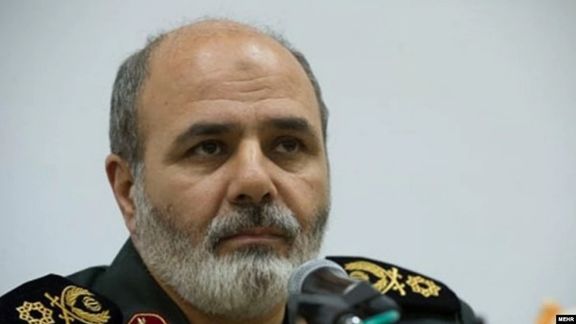
A top aide to Supreme Leader Ali Khamenei says the Islamic Republic’s establishment is still undefeated but it has received a blow from the protest movement.

A top aide to Supreme Leader Ali Khamenei says the Islamic Republic’s establishment is still undefeated but it has received a blow from the protest movement.
Rasool Sanaei-Rad said during a TV program Saturday that “We must accept the differences and open a space for dialogue through free-thinking platforms… but in the first step, our actions must be aimed at suppressing riots.”
He divided the opposition into “domestic” and “foreign” saying the establishment must have self-restraint dealing with those opponents not serving foreign interests.
He also added that the Islamic Republic is “flexible” against the domestic opposition because they are like “our children”.
“Today, we are dealing with a multi-dimensional and multi-layered social phenomenon... we have overlooked excessive use of cyberspace by young people and teenagers during the COVID pandemic” claimed the deputy of the Political Ideological Bureau of the Commander-in-Chief.
The Political Ideology Bureau is part of Khamenei's extensive office, and responsible for “policy-making, coordination, inspection and supervision of the affairs and duties of the representative of the Supreme Leader in the Iranian Armed Forces.” The head of the Bureau, appointed by the Supreme Leader, is currently a mid-ranking cleric, Ali Saeedi, Khamenei's former representative in the Islamic Revolution Guards Corps.
Sanaei-Rad’s claim about “self-restraint and flexibility” is made while the Oslo-based Iran Human Rights Organization has reported that at least 304 people, including 41 children and 24 women, have been killed by government forces during the last 50 days of protests.
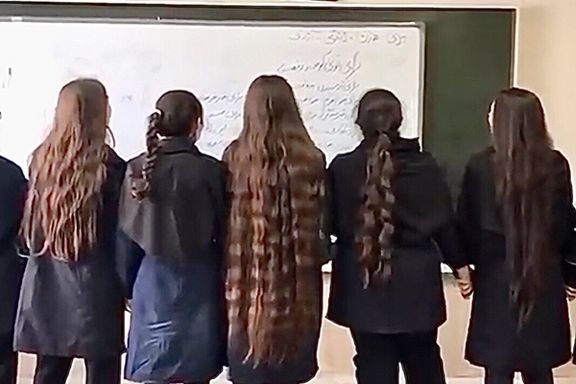
An expert says antigovernment protests and strikes at Iran’s universities and schools show the regime's failure to instill its ideology in over four decades.
Azadeh Davachi, a researcher at, in an interview with Iran International November 6 said acts of protest and slogans by students since September have refuted the ideology the Islamic Republic attempted to teach youngsters throughout 43 years of its existence.
“What the Islamic Republic wanted to inculcate in students’ minds through the schoolbooks have resulted exactly in the opposite. Students remove headscarves and tear down the photos of regime leaders in classrooms. Despite so much crackdown and threats, girls enter school without hijab, chant slogans, record it using cell phones and publish the videos on social media. This means a heavy defeat of the Islamic Republic’s ideology,” underlined the pundit.
Schoolchildren in Iran kept up with daily protests on Sunday chanting slogans and staging strikes to show anger at government crackdown against older protesters.
University students insist they will go to campuses despite all the restrictions imposed but will stage strikes there and not attend classes.
Students at almost all universities in Tehran as well as in some other cities have called for sit-ins and strikes demanding the immediate release of their peers detained earlier.
Security forces have beefed up measures in recent days at campuses to search students when they enter and take away their mobile phones not to let them record videos.
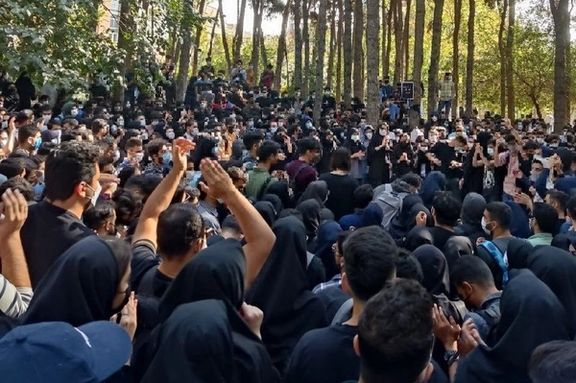
Many students have been arrested since the beginning of anti-regime protests in September. Some are kidnapped by security forces, and often nobody knows their whereabout for days.
In an appalling move, Tehran University of Arts has announced that all drama graduate students will be suspended and cannot take the final exams.
However, students emphasize that they will not stop their strikes until their demands are met. Several professors have also announced that they will refuse to teach until the dismissal of students is canceled and they return to classes.
Davachi believes that the perseverance of students in holding strikes and protests 50 days into the nationwide demonstrations is of great significance, as social and civic movements in Iran have always depended on student movements.
This researcher at Deakin University of Melbourne told Iran International that an important factor differentiating this movement with previous ones is that the slogans are more radical at universities and schools.
“Student actions can strengthen other civic movements and reinforce the popular protest movement. Students’ slogans this time is very similar to those of people on the streets. Therefore, students and older protesters are somehow supporting each other,” added Davachi.
She went on to say that the demands made by students is what the youths want as they are a large group among Iran’s population.
She further noted that the clerical rulers assumed they have raised a new generation at schools who are very committed to their values, but the recent events at universities and schools proved exactly the contrary.
Women play a very significant role in the protest movement, she reiterated, saying “if the uprising of the nation against the regime proves victorious, women will not let their demands be marginalized like in the 1979 revolution and they will play a very crucial role in a free Iran.”
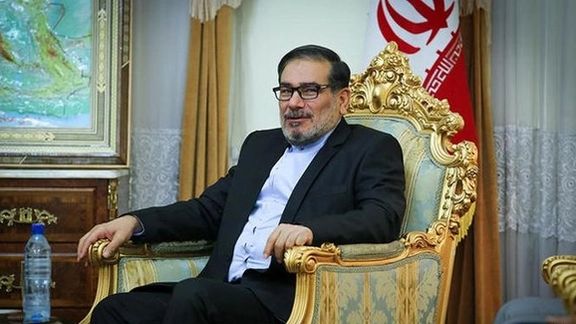
Hardliners are blaming the secretary of Iran's Supreme National Security Council (SNSC) Ali Shamkhani for failure to suppress protests and demanding his removal.
In video-taped remarks released on the internet Sunday, former lawmaker Hamid Rasaei, a hardliner cleric, claimed all security bodies he has spoken to “point in the direction of the secretary of the Supreme National Security Council” as the culprit when it comes to failure in suppressing the protests.
Rasaei also accused President Ebrahim Raisi of not taking timely action and constantly postponing Shamkhani’s replacement.
Shamkhani has kept a very low profile since the protests began. There were rumors among the political elite in Tehran that Major General Mohammad Bagheri, chief of staff of the Armed Forces, would soon replace Shamkhani as the Secretary of the SNSC, an informed source told us recently.
The demand for Shamkhani’s removal from office may be an indication of serious incongruities among the Islamic Republic’s many intelligence and security bodies vis-à-vis protesters.
So far, the IRGC has not resorted to large scale operations against protesters as it did in November 2019 when it immediately used lethal military force, killing at least 1,500 and arresting thousands within a few days.
This time the IRGC has only deployed its plainclothes agents in the field, leaving the official handling of the protests to the police and its special forces. There has also been less use of assault rifles against protesters, but shotguns and beatings have claimed the lives of at least 318 so far according to Human Rights Activists News Agency (HRANA).
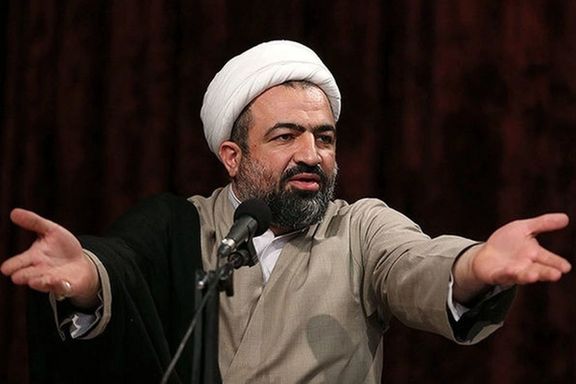
The protests should have ended after Commander of the Revolutionary Guards (IRGC) Major General Hossein Salami’s warning last week that demonstrators should cease and desist, Rasaei insisted in his remarks.
In his speech on October 29 Salami had accused the US, Israel, and European powers of fomenting unrest in Iran. “Stay away from the streets,” he told the Iranians in a threating tone.
Rasaei demanded that the incumbent Secretary of the SNSC and former President Hassan Rouhani who appointed him to the post in 2013 be held to account for the “current circumstances”. He also criticized Shamkhani for his “inefficacy” in suppressing the November 2019 protests in an optimal manner and demanded accountability about allegations of financial corruption against him and his family members.
The secretary of the SNSC is appointed by the president with the consent and express approval of Supreme Leader Ali Khamenei, who also appoints the SNSC secretary as his own representative in the council. Shamkhani has held both positions since 2013.
“Tolerance and dallying are enough,” lawmaker Hossein Jalali told the SNSC and security bodies in a speech in the parliament Sunday where some other ultra-hardliner lawmakers blasted Shamkhani and other security and judicial bodies for indecisiveness. They also demanded that some protesters to receive the death penalty.
Jalali also referred to Molavi Abdolhamid, the leader of Sunni Baluch community, in his speech and alleged that Shamkhani has failed to act against him because “he has given priority” to his “friendship” with former reformist President Mohammad Khatami.
“Preserving the regime is the highest priority, even more important than preserving the life of the 12th Imam of Shiites who is believed to be in occultation,” he told Shamkhani. Many can consider this remark as religious sacrilege since the hidden Imam is supposed to be represent the continuation of Prophet Mohammad’s rule.
Shamkhani, an admiral of the Navy, served as defense minister in Khatami’s first cabinet (1997-2001). Despite having run against the president in the 2001 elections, Khatami reinstated him in his second cabinet, but their relations soured considerably.

A group of 227 parliament members in Iran has called on the Judiciary to issue death sentences for people arrested during the ongoing antigovernment protests.
The parliament, elected in a non-competitive election in February 2020, is packed with hardliners and Revolutionary Guard officers.
In a statement that was read out in the parliament on Sunday, the lawmakers called the protesters ‘mohareb’ -- which literally means warrior in Arabic, but in Islamic law or sharia it means ‘enemy of God’ that carries the death penalty. They also compared the protesters to members of ISIS, who "attack people's lives and property..."
The Iranian regime has so far charged several people with ‘moharebeh,’ “corruption on earth,” “assembly and collusion against national security” and “confrontation with the Islamic Republic” for participating in the protests.
Describing the current wave of popular protests as “riots,” the MPs claimed that “the US and other enemies” are inciting violence, organizing rallies, and providing financial support and weaponry to commandeer the protests. They also said “thugs and mobs” have killed tens of people and disrupted the security of the country.
Echoing the Islamic Republic’s propaganda line, the lawmakers said that “the enemies have been defeated in Iraq, Syria, Palestine, Lebanon and Yemen” therefore they organized the “riots” as a reaction to “victories of the Islamic Republic.”
Without mentioning any individuals or groups, the hardline lawmakers also asked the judiciary to take legal actions against “the politicians who incited the rioters.”
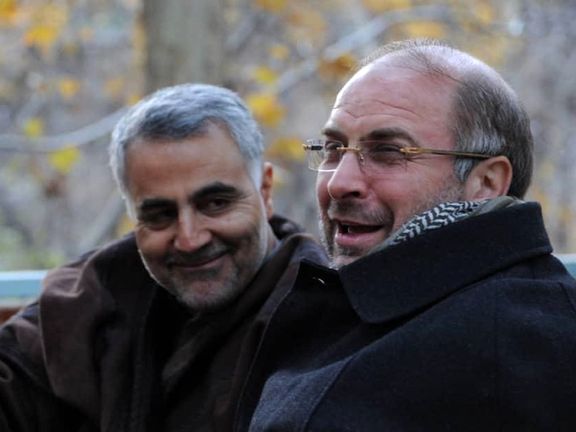
Earlier in the parliament session, Speaker Mohammad Bagher Ghalibaf (Qalibaf) said that main elements of Mossad, CIA and their allied groups are behind the unrest in the country.
Late in October, hardliner MP Mohammad Esmail Kowsari, also a high ranking IRGC officer, implicitly threatened that the government will respond differently to the ongoing protests from now on.
While protests continue across Iran, the Islamic Republic’s Judiciary has also announced that it has indicted over 1,000 people who were arrested during the demonstrations.
Authorities have been claiming that “separatists” and “instigators” are behind the efforts to overthrow the government and break Iran into areas controlled by ethnic groups, a claim routinely denied by Iranians on streets and social media.
The claim that protests are instigated by foreign enemies was first made by Supreme Leader Ali Khamenei and loyal officials now repeat his conspiracy theory.
President Ebrahim Raisi on October 25 accused “enemies of the Islamic Republic” of fomenting the protests, echoing what Khamenei said a day earlier. Parliament Speaker Mohammad-Bagher Ghalibaf in turn vowed that parliament would take action to change the ways of the morality police in a bid to calm the protesters.
“Death sentences against people for exercising their right to freedom of expression, after the killings of peaceful protesters, abductions and gunning down children, and other atrocities, indicate a government that is out of control and willing to quash protests at any cost,” said a statement by Center for Human Rights in Iran.
The Norway-based human rights organization also expressed concern regarding the fate of the detained protesters saying, “dozens of them have been charged with the security-related charges of ‘moharebeh’ and ‘corruption on earth’ which carry the death penalty.”
The Islamic Republic’s history and current evidence indicate that they intend to use the death penalty as a tool of political repression to intimidate their opposition.
Earlier in November, 40 Iranian lawyers issued a statement saying most people no longer want the Islamic Republic and called on their peers to speak up and defend the people.
Iran has been gripped by protests since the death in custody of Mahsa Amini, a 22-year-old Iranian of Kurdish origin who had been arrested on September 13 for allegedly breaching the Islamic dress code and died three days later from severe head trauma. Protests spread fueled by public outrage over a crackdown that led to the deaths of other young men, women, and children. Now in their seventh week, the protests show no sign of ending.
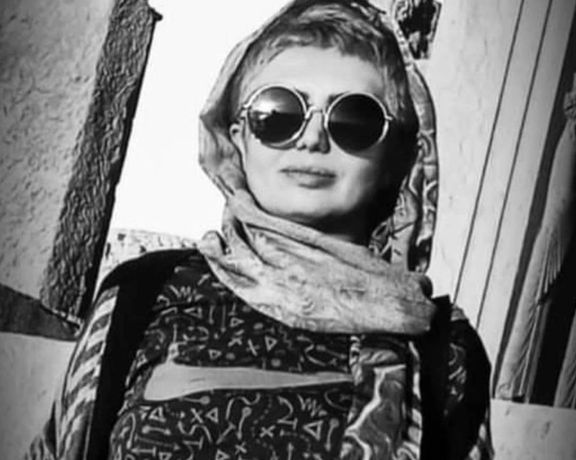
Outraged by the killing of a Kurdish female university student, the people of the western city of Marivan have poured into streets chanting “Death to Khamenei.”
Iranian Ph.D. candidate Nasrin Ghaderi, 35, who was studying philosophy in Tehran died on Saturday after being beaten by security forces with baton during Friday protests.
Under the regime's pressure, however, her father announced she died of flu and an underlying disease.
Videos on social media show Nasrin's body has been laid to rest in the city of Marivan in western Iran amid tight security both at the cemetery and the victim’s family home.
Iran's official news agency IRNA has dismissed media reports that Nasrin was killed with baton strikes, saying she was "spending her normal life" when her family suddenly lost touch with her, and once their son-in-law broke into her place of residence in Tehran, they found her dead.
Reports received by Iran International say gunshots were heard in Marivan and clashes were underway between protesters and security forces in several districts of the city.
Kurdish cities in western Iran have been the center of anti-government protests after Mahsa Amini, who was a Kurdish girl, was killed by police in custody in mid-September.
The Islamic Republic has killed over 300 including 41 children and 24 women since then during protests to say that Mahsa Amini has not been killed by police.

Germany and eight other EU member states plan to impose a new set of sanctions on individuals and organizations helping the Islamic Republic in its crackdown on dissent.
Accordingto a reportby German magazine Der Spiegel on Saturday, a package containing 31 proposals was introduced in Brussels on November 2, targeting individuals and institutions in the security sector as well as companies responsible for suppression of the current wave of protests, ignited by the death in custody of 22-year-old Mahsa Amini.
Measures include the freezing of assets and travel bans, the magazine said without disclosing its sources, adding that the new punitive measures have a good chance of being approved by EU foreign ministers at their upcoming meeting slated for November 14.
Ties between the Islamic Republic and the West are increasingly strained with Germany being among the first that started evacuating the families of the personnel of its embassy in Tehran and the teachers of German-run schools.
Germany's government on Thursday urged its citizens to leave the country or risk arbitrary arrest and long prison terms there.
Late in October, German Foreign Minister Annalena Baerbock said that her country and the European Union were examining whether to classify Iran’s Revolutionary Guard as a terrorist organization for its use of violence in the protests.
In mid-October, the EU sanctioned eleven Iranian individuals and four organizations for their role in the death of Mahsa Amini and the crackdown on the ongoing protests. These are the first and so far only EU sanctions over the ongoing protests.